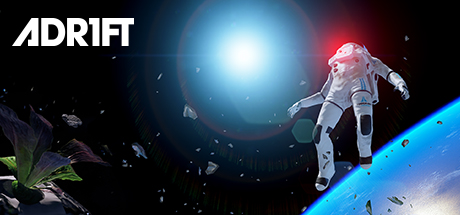Players control astronaut Alex Oshima, commander of an international space station that has suffered some sort of catastrophic incident. Alone in space, you must make your way from chunk to chunk in an effort to both discover what has happened as well as find a way to activate an escape pod. Scattered throughout the area are portable oxygen canisters. Navigating from point to point requires management of that oxygen, as it is used both as your "life bar" as well as the means of propelling yourself through the weightlessness of space.
In a sense, it is functionally just a "walking simulator," like The Stanley Parable or Dear Esther. Yet it does provide slightly more interactivity than those as there is a fail-state. Go to long or stray too far from the oxygen tanks, and you will suffocate to death. Additionally, the space location means there is an up and a down direction to explore, in addition to the usual front/back and left/right. It's actually pretty easy to get disoriented and turned around, and given that several large chunks of the station look the same, it can be hard to keep track of where you were going and where you just came from. Plus, the momentum of using oxygen thrusters means you are likely fidgeting with the controls on a much more frequent basis than other "walking sims."
Visually, the game is breathtaking out of the gate. It's hard not to see how much better the game might be as a virtual reality experience rather than a traditional first person game on your television. Until you realize that you can die, you can easily get lost just looking around at the Earth below. One of the creators tweeted a response to me saying that it is a meditative game, and to some extent, that is true. However, that feels a bit misleading since there is still an objective to the game. You still need to make it to certain points, and you can still get electrocuted or suffocate and die. There's still a point. It isn't just to let players experience a space walk.
For a game built to "stop and look around," they don't necessarily provide much interesting stuff to fill in the details. It is kind of easy to miss key story elements, and if you don't get those, or only get a few, you miss out on a pretty important aspect of the game. It's also a bit difficult to argue that it is meant to be simply a meditation given how stressful it can be when you find yourself desperate for oxygen. Some critics have complained that there just isn't anything to do in the game, but that isn't quite the right way to approach this game. In terms of "what to do," it's similar to the much praised Journey. The difference, however, is that Journey created a more compelling atmosphere and visual narrative that made it far more engaging than slowly drifting from place to place.
There is a lot to like about the game. It's lack of hand-holding, that it tells backstory through discovery of personal computers around the station, the connection between motion and health that forces players to try and conserve oxygen, are all interesting design elements that make it solid. It's beautifully rendered, isolating, lonely environment just above the Earth makes it worth checking out.
Unfortunately, there are too many stretches where Adr1ft just sort of leaves you out to dry. For a game encouraging exploration, they could have provided some optional control feature that better points you in the right direction to the next objective. What they have in place can be infuriatingly inaccurate, causing you to spend hours just floating around doing literally nothing and ultimately going nowhere. This, also, says nothing of game breaking technical issues. (I had to restart the game three separate times because a door that was supposed to open so I could advance to the next stage would not. And I had another situation late in the third attempt wherein the game would not let me into the area that I had to activate. So I was never able to actually finish the game, which is a bit unfortunate since I did generally like it, and had to reference a walkthrough video to realize my game kept "breaking." It shouldn't take more than two or three hours to get through, but with game breaking glitches, you can be floating there for ages before you realize the game isn't letting you proceed.)
REDUCTIVE RATING: It's Fine

No comments:
Post a Comment